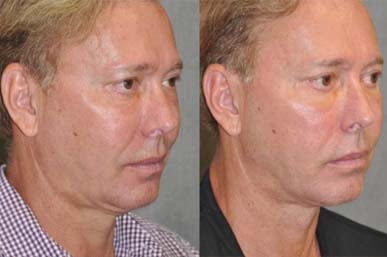
Skin Doctors
Services Skin Clinic
Women with very large breasts and pendulums can experience a range of medical problems caused by excessive overweight.

Hair transplantation is a micro surgical procedure for transferring healthy follicles located in a safe place called the donor area to an area called the recipient that will receive these follicles. There are two hair implant techniques: FUE and FUT. We offer both techniques for convenience and indication.
Coolsculpting scientifically called Cryolipolysis is a non-invasive treatment to eliminate localized fat. It is the only technique to eliminate localized fat permanently, using a cooling technology that removes fat cells selectively, through a natural and gradual procedure that does not damage the skin.


Platelet Rich Plasma (PRP) is one of the most modern techniques of cellular regeneration, based on the property of platelets secreting substances called Growth Factors that injected into the dermis, stimulate the synthesis of hyaluronic acid and formation of new Collagen. PRP restores skin vitality, improving the appearance, texture and tone of the skin.
Profound Needling is a non-invasive treatment that uses thermal and electromagnetic energies with the application of Gold Microneedles. The thermal energy facilitates the smooth penetration of the Microneedle, which reaches the deep dermis without bleeding and virtually without pain. The electromagnetic current intensifies the effect of radiofrequency, creating micro lesions in the dermis, stimulating the natural healing process.


The dermapen is an electronic device that uses multiple fine needles to pierce the skin, the platelet-rich plasma solution is applied at this time, this remodels the collagen and improves skin rejuvenation, helps to improve acne scars, wrinkles, fine lines, striae, open pores, in addition to improving the texture and firmness of the skin.

The so-called Mommy Makeover is a unique procedure in the sense that they are actually a personalized combination of several cosmetic treatments in one. It is emerging as a fashion promoted by great international artists who have just become mothers and want to recover the perfection of their body after giving birth. Actually, Mommy Makeover is a set of interventions of plastic surgery, – three, to be exact – whose purpose is to recover the shape and smoothness of the breasts, a completely flat abdomen and eliminate excess fat, especially in the thighs and abdomen.
There are two different techniques currently available for hair transplants in men:
1. The extraction of follicular units or FUE
2. The follicular unit of graft or FUSS/FUT.
The best technique will depend on the patient, their pattern and degree of hair loss, as well as the patient’s personal wishes.
The most common technique in hair transplant surgery today is known as Follicular Unit Extraction (FUE) because of its main advantage which is the absence of a linear incision in the donor site. Instead, the individual follicular units are extracted one by one directly from the scalp. FUE is a somewhat more expensive procedure, but for most patients it represents a small additional investment to ensure the best long-term result and maximum satisfaction.When done correctly, FUE grafts have an excellent regrowth.
The other technique of hair transplantation is follicular unit grafting (FUT), sometimes called strip harvest or strip technique. With FUT, a strip from a single donor site, varying in length from 5 to 25 cm, of the scalp with hair is removed from the back or from the sides of the head. From this strip hundreds of more often several thousand small grafts containing one to three, sometimes four hairs each, are dissected. These grafts are implanted in small incisions of slit in the bald area or thinning where they can grow over several months just like normal hair. This procedure is typically performed with local anesthesia and oral sedation – although the occasional patient chooses twilight sedation, something we offer in our certified operating rooms – and can take three to eight hours to complete depending on the number of grafts involved.
In order to ensure an aesthetic result with any hair transplant, either FUE or FUT, the key step is the consultation. Good communication between you and your surgeon is essential. During your initial consultation, one of our board-certified plastic surgeons will ask you to explain what you expect from your hair transplant. Our surgeon will plan manufacturing of the recipient sites and determine the pattern, distribution and angle of hair growth to achieve the most natural aspect.
During the consultation, our specialist will develop a series of preoperative tests to check if the person is a good candidate, as well as being in good health conditions for the application of anesthesia in the capillary graft. In this sense, the anesthetist himself will be in charge of checking the patient’s medical history a few days in advance. The most common is that you practice an electrocardiogram in addition to advising on the type of anesthesia appropriate for your case. He will also explain the factors that can influence the procedure and the results. Your surgeon will also explain the technique and type of anesthesia you will use, the place where your surgery will be performed, the risks and costs involved, and any options you may have. Be sure to tell your surgeon if you have had any prior surgery or previous damage to your skull, even when it has been many years.
Do not hesitate to ask your doctor any questions or doubts you may have, especially if you have to do with your expectations and interests about the results.
Our surgeon will give you specific instructions on how to prepare for surgery, include guidelines on eating and drinking, smoking, taking or avoiding safe medications, and washing your head. Before the hair transplant process, you should drink plenty of water, especially the day before, to keep the body hydrated. It is essential that you do not consume any alcohol at least two weeks before the transplant. Neither will be recommended drinks that contain caffeine or some other stimulant as they cause an increase in bleeding and sensitivity to the drugs that will be used in the intervention. Take care of them at least 3 days before surgery. It is also not advisable to smoke, since it can be a cause of infection, causing greater scars or sacrificing the survival of the grafts. Finally, the day of the operation, you should wash your hair with a normal shampoo, avoiding using any other product. Follow these instructions carefully and help your surgery evolve more quickly.
At the time of undertaking the hair transplant procedure, the patient is given local anesthesia. In addition, this will be accompanied by a slight sedation. In this way, the person will not experience any pain during the intervention and will be completely calm and relaxed. In the worst case, the only thing you can feel is some tension in the scalp area. Once the hair transplant operation is completed, and thanks to the use of this local anesthetic, the patient can be discharged after a few hours.
Non-Surgical
Face Surgery
Non-Surgical
Satisfaction
Average Cost
Surgery Length
Breast reduction or reduction mammoplasty is a surgery that aims to reduce the size of the breasts. The reduction and remodeling of the breast is achieved by removing skin, breast tissue and fatty tissue. With this technique a firm, light, well-designed and harmonious breast is achieved.
Mammoplasty
General Anesthesia
3 – 6 days off from work
4 – 6 weeks before resuming physical exercise
Free Consulation

Skin Doctors

Skin Doctors

Skin Doctors

Skin Doctors
Testimonials
I cannot thank you enough! After just 2 months of following your skin care routine and treatment recommendations, I can’t believe the amazing results I have already seen! My skin feels so much stronger with diligent use of your skin care and medical peels.

I had massive confidence issues that had a very negative impact on my career so I decided to set up an appointment with LHS just to discuss my options. From day one, I felt taken care of. I was never offered anything I didn't need and every procedure was explained to me in full detail. I am so happy with the results. I feel like a new me and I have the team at LHS to thank for it. ⠀

I have had back pain issues for the last decade. I had tried everything before I met with the LHS team who did a whole history and came to the conclusion that I needed a breast lift and reduction surgery. They were so right! The surgery has changed my life and I feel younger and more energetic. It was a great experience with true professionals. Thank you!

